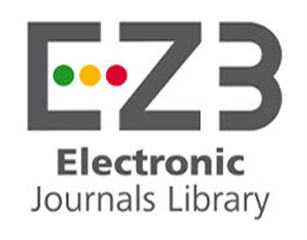RESOURCE TERRITORIAL POTENTIAL AND METHODICAL BASES OF ITS ESTIMATION
DOI:
https://doi.org/10.32689/2617-2224-2021-3(28)-4Keywords:
resource potential, public administration, raw materials territories, economic entity, public interests, socio-economic systemsAbstract
It is determined that the effectiveness of the choice of directions of development of the territory is largely determined by the completeness of its potential. The economic condition can be assessed by different characteristics, for raw materials with many sectoral specialization, the urgent issue in this aspect is the diagnosis of the size and completeness of the use of resource potential as an important element of economic. The task of economic analysis – the assessment of past development to choose the line of current and future behavior of the economic entity, i.e. a set of successive actions that are an organic consequence of certain management decisions, on the one hand, their understanding and rational adaptation to current economic con – on another. It is noted that the state, personifying and reflecting public interests, builds, as noted, a system of regulation of economic relations, of course, based on the traditions of its own population and the experience of other countries. Thus, it forces economic actors to act within a fixed framework, which slightly reduces the overall uncertainty of the socio-economic system and strengthens economic and social sustainability. The state regulates the activities of economic agents, the more it limits their responsibility for decisions. As a result, more national resources are spent on each unit of aggregate social product produced. Thus, to maintain the efficiency of the social system, the state must find such forms of regulation that, while maintaining the general structure and objectives of regulation, would remove the economic environment from acceptable levels of uncertainty, which provokes economic relations to seek effective but risky management decisions. Currently, the efficiency of the regional economy, in fact, is determined by its competitiveness, and this is where the objective link between the existing production apparatus, investment in its reproduction and employment. However, such a statement, valid without restrictions for the capital of the economic entity, requires certain conditions for the regional economy, a more complex phenomenon. In the regional administration of modern Ukraine, firstly, economic and social tasks are closely intertwined, as the system of relations adopted in the constitution redistributes rights and responsibilities between the three levels of government, and secondly, the current property relations must be taken into account.
References
Про добровільне об’єднання територіальних громад : Закон України від 05.02.2015 № 157-VIII. Відомості Верховної Ради України. URL: https://zakon.rada.gov.ua/laws/show/157-19#Text (дата звернення: 10.05.2021).
Про затвердження Методики формування спроможних територіальних громад : Постанова Кабінету Міністрів України від 8 квітня 2015 р. № 214. Відомості Верховної Ради України. URL: https://zakon.rada.gov.ua/laws/show/214-2015-%D0%BF#Text (дата звернення: 10.05.2021).
Що у розвитку громад і територій відбулося за 2019 рік. Децентралізація. URL: https://decentralization.gov.ua/news/12055 (дата звернення: 19.05.2021).
Хто і як керує ОТГ? Профспілка працівників агропромислового комплексу України. URL: http://profapk.org.ua/news/news_apk/2500.html
(дата звернення: 18.05.2021).
Ольшанський О.В. Об’єднання територіальних громад як механізм забезпечення їх ресурсної спроможності. Актуальні проблеми державного управління. 2015. № 2. С. 92–99.
Фурдичко Л.Є. Децентралізація: фінансова незалежність місцевих бюджетів України. Соціально-економічні проблеми сучасного періоду України. 2015. № 5. С. 39–42.











